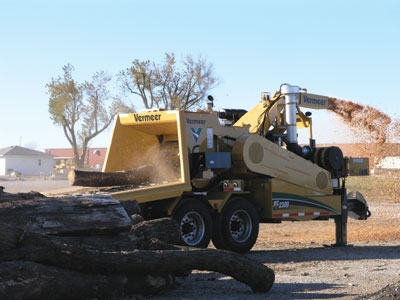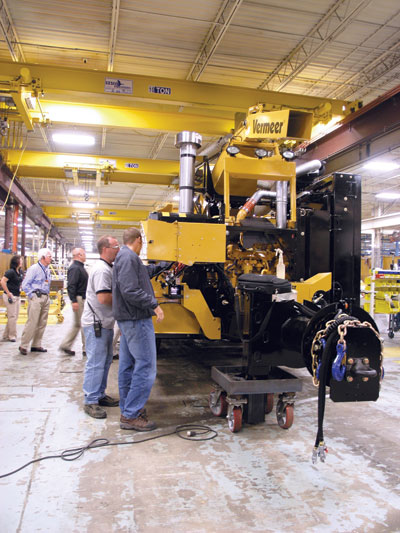
Features
Forestry Management
Harvesting
Logging Evolution
Logging isn’t just about the roundwood anymore. What was once considered leftover harvesting waste is gaining in value as a renewable energy source, so it’s becoming increasingly beneficial for logging companies to integrate biomass extraction into their forestry operations. It’s not only a better use of the “waste” wood than burning in the field or landfilling; if done right, it’s an additional revenue source for the beleaguered forest industry.
November 9, 2011 By Heather Hager
 Logging isn’t just about the roundwood anymore. What was once considered leftover harvesting waste is gaining in value as a renewable energy source
Logging isn’t just about the roundwood anymore. What was once considered leftover harvesting waste is gaining in value as a renewable energy sourceWith the great potential for biomass markets in mind, Vermeer Corporation is gearing up to help loggers diversify their production portfolios. It sees wood chip production as the way to go. Its market research indicates that many biomass end users are switching from wood grindings to a chipped form that the users say offers better size consistency and flow-through characteristics.
Already manufacturing tub and horizontal grinders and brush chippers for land clearing and tree service purposes, Vermeer recognizes that the forest industry has slightly different needs in terms of the scale and specific features of biomass processing equipment. It says it kept loggers’ needs in mind when it designed its newest machine for the forestry market: a whole-tree chipper. The company did that by consulting loggers and biomass producers about their biomass operations. “We asked them, ‘If you could build your own machine, what would it be?’” says Mark Rieckhoff, environmental sales manager for Vermeer. Then Vermeer engineers compiled those ideas in developing the WC2300 whole-tree chipper.

Peter Wood, co-owner of northeastern Minnesota-based Wood Forest Products Inc., ran some of the prototypes at his work sites during product development. “I wasn’t in the market to buy their machine, it’s just that they were looking for somebody to feed it and then give them feedback on how it worked,” he explains. He currently uses a Morbark chipper and Bandit horizontal grinder and has many years of experience working with biomass. He says that he noticed some good improvements between the first prototype he tried and Vermeer’s final finished product.
Market Share
The 12 manufacturers in the whole-tree chipper market today have sold a total of about 200 of the machines each year between 2005 and 2009, says Rieckhoff. Vermeer estimates that there are currently 9700 active logging companies in the United States alone. Add to that the global push for renewable energy and the growing numbers of biomass users, from public institutions to small commercial to large industrial users, both domestically and globally. If the biomass market continues to grow as predicted, there should be plenty of opportunity for strategically located forest operations to supply biomass to the various end users.
Vermeer sees loggers as the primary users of the 440-hp WC2300, with biomass producers and public institutions as secondary users. For example, the tongue of the machine has a grapple grip collar so that it can be moved about the work site using a log skidder. There’s also an optional work light package. “Ours are tucked up in behind the in-feed so it’s more of a target for the loader operator; he can see where he’s going with the material,” says Brad Van Rheenen, Vermeer solutions specialist. “And there’s also a set on the front that shines up inside the semi trailer.” For more WC2300 specs, see page 30 of the November/December 2010 issue of Canadian Biomass.
For those who already own the HG6000 horizontal grinder, Vermeer is also offering an attachment package that will allow it to produce wood chips.
Print this page